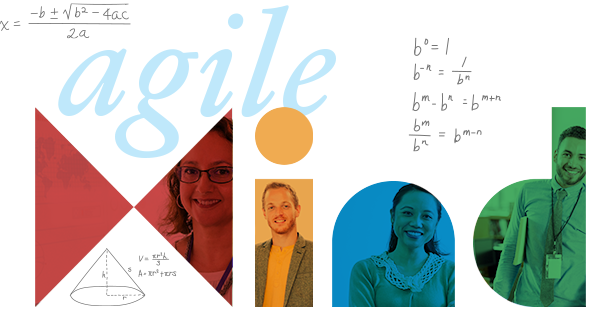Across the country, educators are grappling with how to improve outcomes for students who enter Algebra I or Mathematics I one or more grade levels behind their peers. Many of the existing approaches are based on a deficit model—a focus on remediating real or perceived weaknesses in students. Remediation fails to produce academic gains, and frequently produces the consequence of low student engagement and motivation.
In contrast, use of an asset-based model called “an architecture of intensification” has proven to result in major academic gains and renewed self-confidence among participating students. Unlike many traditional models of remediation, an intensification approach builds on students’ competencies, explicitly teaches effective learning strategies, and develops skills such as productive persistence and sense of belonging to a community of learners. Intensification addresses gaps in prior learning while enabling students to learn on-grade level content. The result? Students who are 1-3 grade levels behind catch up to their peers – and in many instances outperform them – earning their Algebra I or Mathematics I credit within a single year.
Are your district’s remediation interventions for struggling students failing those students, causing them to fall even further behind? How might a comprehensive intensification strategy allow your students to thrive?
Just-in-time instruction vs. Just-in-case instruction
Re-teaching, reviewing, and drilling students on pre-algebra material often bores and frustrates them, especially when the pedagogical approach is similar to what failed the first time. Frequently, this approach also causes students to fall further behind their peers. When students aren’t progressing, their motivation and self-confidence declines. Intensification introduces students to grade-level content, while simultaneously exposing and addressing misconceptions to ensure that students are reinforcing their foundational knowledge as they learn new concepts. This is achieved through just-in-time support that develops enduring understanding.
Using additional time to speed up vs. slow down
A number of strategies for adding time are used with struggling students: supplemental support periods, double-block periods, or courses sequenced over two years. Typically, this time results in slowing down or repeating instruction, which is ineffective and can be discouraging and tiresome for teachers and students alike. Intensification models carefully plan a cohesive use for extra time in order to accelerate learning. The time is used to provide supportive scaffolding, additional representations of concepts, real-world applications of mathematical situations that help students maintain cognitive engagement and master key ideas and relationships.
Conceptual development and deliberate practice vs. repetition
Rote memorization and repeated drilling of skills alone often serves as a short-term substitute for the development of conceptual understanding and related problem-solving and reasoning capabilities. Repetitive, drill-based practice is often demotivating, can reinforce bad habits, and rarely leads to long-term understanding. In contrast, intensification assists students in developing strategic competencies, problem-solving abilities, and mathematical communication skills, while providing deliberate and distributed practice opportunities. Key to this approach are explicitly-taught problem-solving strategies as well as strategic routines and supports that help students draw connections, organize information, and make their mathematical thinking “visible” to them and to their teachers. Intensification combines the development of foundational understanding, and problem-solving and reasoning skills with ample practice opportunities designed to help students increase fluency and automaticity.
Social-emotional skill building vs. lowered expectations
Struggling and below grade level students are frequently identified only by their deficits – by themselves and the adults around them. Remediation often does not address the social and emotional challenges such as lack of motivation and engagement, and negative beliefs and behaviors at the root of poor academic performance. Intensification fosters positive academic identities and develops students’ ability to struggle in productive ways, with immediate opportunities to practice those skills with on-grade level math content. This approach transforms the way students think about themselves as learners, develops their motivation and commitment to high achievement, and fosters skills that sustain students’ productive engagement and persistence in challenging academic work.
An architecture of intensification can be implemented in any district, but it requires instruction, pedagogical content, and professional supports to be cohesively and carefully aligned. Agile Mind, working closely with leading researchers at the Charles A. Dana Center, have been partnering with school districts enacting intensification for years.




